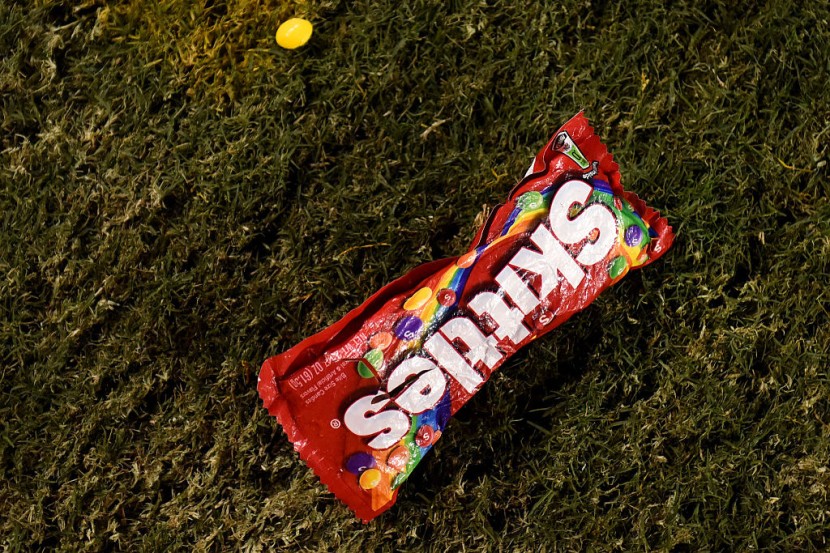
(Photo: by Patrick Smith/Getty Images) LANDOVER, MD - OCTOBER 06: A pack of Skittles lays on the field that was thrown by a fan following running back Marshawn Lynch #24 of the Seattle Seahawks touchdown in the fourth quarter against the Washington Redskins at FedExField on October 6, 2014, in Landover, Maryland.
Four food chemicals widely found in soda and sweets have been outlawed in California, but contrary to what some social media posts have claimed, Skittles are still available for purchase.
The legislation was known as the "Skittles ban" since a previous bill sought to restrict titanium dioxide, a substance present in the candy.
But lawmakers took that particular chemical out of the bill last month, according to BBC. Instead, it outlaws a number of compounds that are already illegal in other nations.
The California Food Safety Act prohibits the sale of foods containing substances such as Red Dye 3, potassium bromate, brominated vegetable oil, and propylparaben, some of which have been related to animal cancer.
Businesses have until the first of January 2027 to get rid of the additives from their goods. Gavin Newsom, the governor of California, hailed the legislation as "a positive step forward" before the US Food and Drug Administration (FDA) "reviews and establishes national updated safety levels for these additives".
False Information Spreads Online
However, it did not stop false information from spreading online.
The popular culture account Daily Loud incorrectly claimed that California would outlaw Skittles sweets in 2027 in a post on X, formerly known as Twitter. The article had 20 million views.
The European Union has already outlawed the four substances listed in the California statute.
Although the ingredient in Skittles, titanium dioxide, is prohibited in many other regions, including the EU, the FDA has stated that tiny doses of the substance can be safely taken.
Before they are used in products that are put on the market, substances added to food must comply with the Federal Food and Drug Act's requirements for safety under their intended circumstances of use, and safety information must be readily available to show a reasonable certainty of no harm.
The FDA said in an email to NGA that it oversees and approves the use of food ingredients to make sure they are secure.
Read also: California Bans Toxic Chemicals in Popular Candies, Drinks, Food
FDA's Negligence?
The manufacturer of Peeps candy was urged to discontinue using Red Dye 3 earlier this year by the advocacy and research organization Consumer Reports. Additionally, 24 organizations and scientists joined Consumer Reports in launching a petition last fall urging the FDA to formally remove Red Dye 3 from the list of approved color additives in foods, dietary supplements, and oral medications. The Center for Science in the Public Interest, a consumer food safety organization, was one of those 24 organizations.
Consumer Reports, which co-sponsored the measure with the Environmental Working Group, claims that the FDA hasn't looked at the chemicals prohibited by the California Food Safety Act in at least 30 to 50 years.
Related article: Scientists Warn Common Food Dye in Famous Snacks Linked to Bowel Inflammation, Study Says
© 2026 HNGN, All rights reserved. Do not reproduce without permission.








